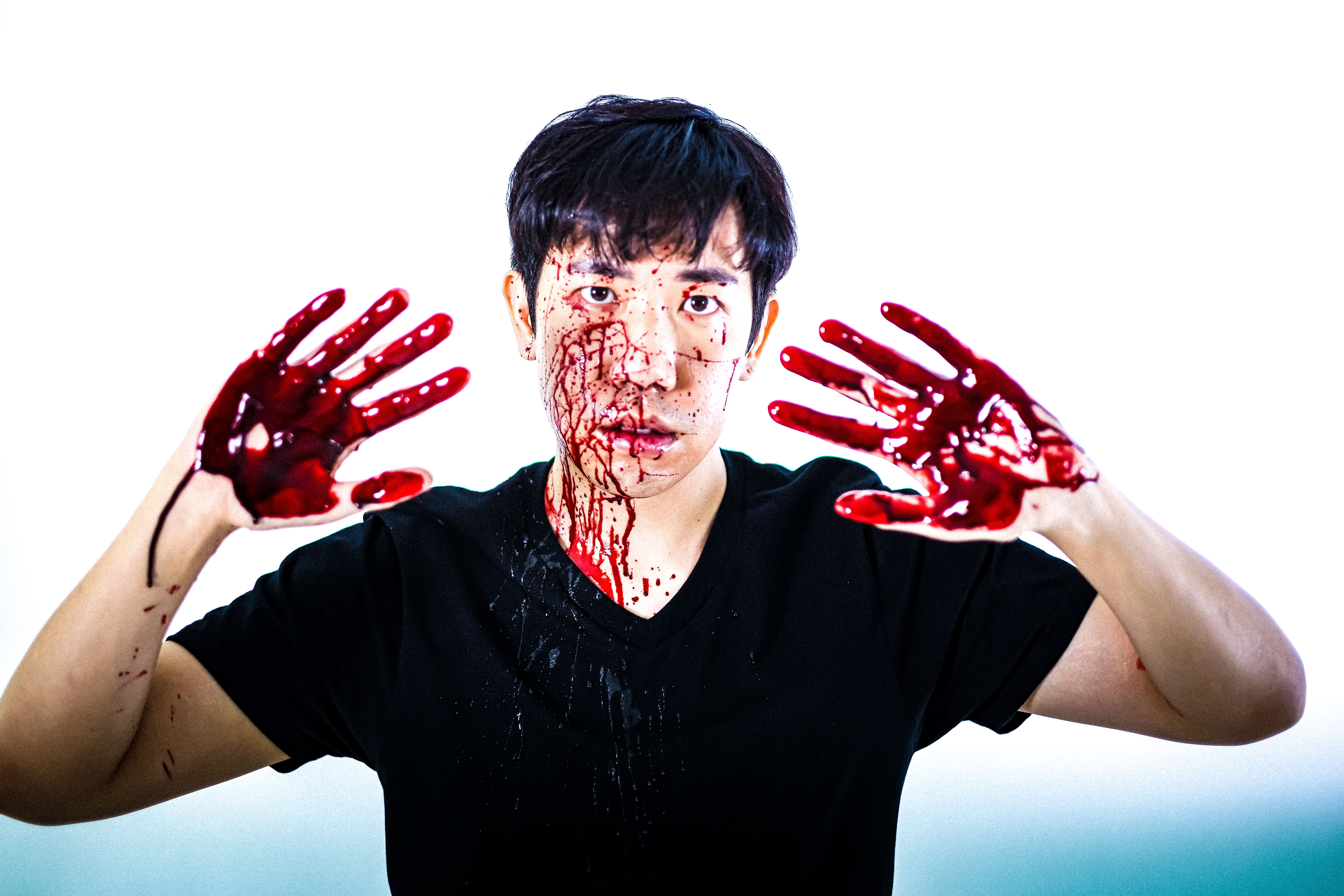
Slasher Movies Are Back: Why 2025’s Bloodiest Horror Films Are Going Viral
Written by on Jul 14, 2025 2:15 PM
The sound of steel meeting flesh echoes through darkened theatres nationwide as slasher movies reclaim their bloody throne atop the horror hierarchy. After years of “elevated horror” dominating the genre conversation, audiences are craving something more visceral, more immediate, and undeniably more brutal. The numbers don’t lie: horror box office receipts for traditional slasher films have surged 340% compared to 2023, with social media engagement around slasher film content reaching unprecedented levels across TikTok, Instagram, and YouTube.
This isn’t just nostalgia driving the revival, it’s a complete cultural reset. Today’s slasher movies aren’t content to simply rehash the masked killer formula that defined the 1980s and 1990s. Instead, they’re weaponizing our digital obsessions, turning our screen addiction into the very thing that kills. Leading this charge is a new breed of horror that understands something fundamental: in 2025, the real horror isn’t being hunted by a killer, it’s being watched by millions while it happens.

From the algorithmic nightmare of Skillhouse to the franchise-reviving brutality of Terrifier 3, modern slashers are rewriting the rules of fear for a generation raised on viral content and streaming binges. These films aren’t just asking audiences to scream, they’re demanding viewers become complicit participants in a digital colosseum where death becomes content, and viral content is king.
The resurgence of slasher movies in 2025 represents more than a simple genre cycle. It’s a direct response to our oversaturated digital landscape. After nearly a decade of cerebral, metaphor-heavy horror films that required film school dissertations to fully appreciate, audiences are hungry for something refreshingly straightforward: masked killers, creative deaths, and the primal fear that comes from watching someone run for their life.
Seventy-eight percent of horror fans aged 18–34 express fatigue with “elevated horror” that prioritizes allegory over genuine scares. This demographic shift has created the perfect storm for slasher film revival, with studios recognizing that sometimes the best horror is the kind that doesn’t require a PhD in film theory to understand. The formula remains elegantly simple: introduce characters, establish a threat, and watch the bodies drop in increasingly inventive ways.Trapped in our homes, scrolling through endless feeds of curated content, we became accustomed to instant gratification and immediate thrills. Traditional psychological horror, with its slow-burn tension and ambiguous endings, suddenly felt like homework. Slasher movies offer something different: immediate impact, visceral reactions, and the kind of shared experience that transforms watching a horror movie in theatres into a community scream chamber.
Perhaps most importantly, the rise of social media has created a perfect ecosystem for slasher film success. Unlike other horror subgenres that rely on subtle atmospheric dread, slashers provide immediately shareable moments such as the perfect kill, the shocking reveal, the crowd reaction shot. TikTok compilations of theatre audiences screaming during particularly brutal sequences have become content genres unto themselves, with some reaction videos garnering millions of views. This social media integration isn’t accidental. Modern slasher movies are engineered for virality, designed with built-in moments that demand to be clipped, shared, and discussed. The result is a symbiotic relationship between filmmaker and audience that extends far beyond the theatre experience, creating ongoing engagement that traditional horror films struggle to achieve.
While today’s slasher movies pay homage to genre classics, they’ve evolved far beyond simple imitation. The most successful modern entries understand that contemporary audiences require more than just updated versions of Halloween or Friday the 13th. They demand films that speak to current anxieties while delivering the visceral thrills that made the genre legendary.
The biggest evolution lies in how these films address technology and social media. Where classic slashers isolated their victims by cutting phone lines or stranding them in remote locations, modern slasher films recognize that true horror comes from being completely connected yet utterly helpless. The killer isn’t just stalking victims, they’re performing for an audience, turning murder into entertainment, and forcing viewers to confront their own complicity in the violence they consume.
Character development has also undergone significant transformation. While 1980s slashers often relied on archetypal characters, contemporary slasher movies feature more complex protagonists who reflect modern social dynamics. These characters exist in a world of social media metrics, where personality becomes performance and authenticity is just another brand strategy.
Modern slashers have also embraced technological advances that enhance rather than replace practical effects. The best contemporary films combine traditional gore techniques with digital enhancement, creating kill sequences that feel both nostalgically familiar and shockingly fresh. The camerawork has evolved too, incorporating handheld digital features that mirror how we actually experience the world through our phones and cameras.
Sound design has also become increasingly sophisticated, with many modern slasher movies using audio mixing techniques that create physical discomfort in viewers. The goal isn’t just to startle audiences but to create a sensory experience that lingers long after the credits roll. This attention to audio detail reflects broader changes in how we consume media, through headphones, in isolated environments, where every sound becomes amplified and personal.
No film better exemplifies the evolution of the slasher movie than Skillhouse, an influencer horror film that transforms our social media obsessions into the stuff of nightmares. This new slasher movie doesn’t just update the genre for the digital age, it weaponizes our relationship with technology, turning viewers into willing participants in a blood-soaked content creation cycle.
At its core, Skillhouse understands something fundamental about contemporary horror: the most terrifying thing isn’t being hunted by a killer, but being watched by millions while it happens. The film’s villain, known as the Triller Killer, doesn’t just murder the social media influencer horror film victims, he livestreams their deaths, turning murder into viral content that audiences consume with the same casual engagement they’d give to any other social media post.
What makes Skillhouse particularly effective is its unflinching examination of audience complicity. The film forces viewers to confront uncomfortable questions about their own consumption habits: How different are we from the fictional audiences watching these livestreamed murders? What does it say about our society that violence becomes entertainment, and entertainment becomes addiction?
The genius of Skillhouse lies in its understanding that modern horror villains must be as sophisticated as their intended audience. The Triller Killer isn’t just a masked maniac, he’s a digital native who understands engagement metrics, algorithmic promotion, and the psychology of viral content. Every kill is crafted for maximum shareability, every death designed to generate the kind of shock and awe reaction that demands to be recorded and reposted.

This approach reflects broader changes in how we understand celebrity and performance in the digital age. The Triller Killer isn’t just killing for personal satisfaction, he’s building a brand, growing an audience, and turning murder into a sustainable content strategy. It’s both absurd and terrifyingly plausible, mirroring our own relationship with digital fame.
The resurgence of slasher movies in 2025 isn’t happening in a vacuum. These films act as darkly comedic mirrors to our modern anxieties, reflecting fears about fame, privacy, authenticity, and the price of constant connectivity. Where classic slashers often centered on morality tales about teenage rebellion, modern entries tackle deeper concerns around online identity and social media performance. Films like Skillhouse confront audiences with uncomfortable truths about their media consumption. We live in an age where tragedy becomes shareable content, where trauma is monetized, and where the line between reality and performance has all but vanished. Modern slasher movies expose these anxieties and demand that we acknowledge our role in perpetuating them.
Modern slasher movies also explore the twisted relationship between fame and death in the digital era. Characters don’t just die, they become content. Their final moments are transformed into viral clips, preserved online long after the film’s release.
These films comment on how algorithms shape behavior, creating feedback loops that reward increasingly extreme acts. Characters find themselves in performance spirals, constantly escalating their behavior to keep an audience engaged, until violence becomes the only way to break through.
While Skillhouse leads the charge, it’s far from alone. Terrifier 3 continues Art the Clown’s reign of terror with a brutal commitment to practical effects. Its success confirms that audiences crave gore, especially when it’s executed with both technical mastery and dark humor. Thanksgiving proved that holiday-themed slashers still resonate with audiences, while X and Pearl demonstrated that period settings can be used effectively without sacrificing relevance. These films blend old-school thrills with modern fears around sexuality, identity, and performance.
This resurgence isn’t confined to the U.S. only. International filmmakers are contributing bold new scary movies that reflect localized fears, from Korean films that tackle cyberbullying to European thrillers addressing digital surveillance. These stories prove the slasher formula adapts well across cultures, maintaining its fundamental elements while taking on even darker meanings.
Social media isn’t just a marketing channel, it’s the narrative backbone. Theatre reaction videos have become their own genre, with clips of audience screams and gasps going viral and fueling box office interest. The more intense the film, the more shareable it becomes.
Platforms like TikTok play a critical role in slasher success, providing fertile ground for reaction content, fan theories, and director commentary. These platforms amplify the genre’s reach, particularly among younger viewers.
Modern slashers are built with virality in mind. Directors intentionally craft moments that are designed to be recorded and reposted, transforming key scenes into instant internet sensations. These moments serve both the narrative and marketing functions, blurring the line between storytelling and strategy.
Audiences no longer want to passively watch horror, they want to share it, remix it, and react to it. This interactive layer elevates slashers from film to experience.
Contemporary slasher films use audio-visual tools to create intense sensory reactions. Sound design is more layered than ever, with bass-heavy hits and distorted frequencies creating discomfort and unease. Visuals draw from phone camera aesthetics, glitch art, and social media filters.
Color grading often mirrors our digital world, blue hues, overexposed whites, and pulsing reds designed to feel like a feed we can’t look away from.
Practical horror film effects remain essential, even as digital tools enhance them. The combination produces gore that feels grounded but polished. In an era where everything can be faked, physical effects offer a sense of reality that hits harder emotionally and psychologically.
Today’s audiences seek authenticity. Slasher films provide a safe space to process fear, anxiety, and aggression, especially in a culture dominated by curated, filtered interactions. Screaming in a theatre becomes a communal purge, a shared emotional release.
There’s also catharsis in watching characters struggle with the same pressures we face. Whether it’s social media obsession or fear of anonymity, these films let us face the darkness, without the filters.
In a world of performative interactions, slashers offer something raw and unedited. They promise blood, and deliver. There’s no pretense. No hidden message. Just a genuine emotional response. And in 2025, that honesty feels revolutionary.
Slashers are inexpensive to produce but generate huge returns, thanks in part to built-in social media engagement. Their viral potential acts as unpaid promotion, creating sustained buzz long after their release.
Streaming platforms love them too, as slashers drive high engagement metrics and subscriber retention. The genre has become a smart investment, both creatively and commercially.
With the success of films like Skillhouse and Terrifier 3, studios are pouring more resources into horror. There’s also an increased appetite for international co-productions, which bring fresh cultural perspectives while broadening market reach.
The next generation of slasher movies will likely incorporate AI, smart homes, augmented reality, and other emerging tech. But the core elements will remain the same: threat, suspense, and survival. The genre’s adaptability ensures its longevity.
The resurgence of slasher movies in 2025 represents more than just a nostalgic return to classic horror, it’s a sophisticated response to our current digital moment that transforms our technological anxieties into visceral entertainment. Films like Skillhouse have proven that the genre can evolve without losing its appeal, creating horror that feels both familiar and shockingly contemporary.

As audiences continue to crave authentic experiences in an increasingly artificial world, slasher films provide something that can’t be filtered, curated, or digitally manipulated: genuine fear, unfiltered emotion, and the kind of communal experience that reminds us why we gather in dark theatres to be scared together. We’re collectively scared of a masked killer, a sharp blade, and the timeless thrill of wondering who will survive until dawn.
The future of horror lies not in abandoning the genre’s roots but in understanding how those roots can grow in new digital soil. Whether you’re a longtime horror fan or someone curious about the genre’s evolution, the current wave of slasher movies offers something for everyone: nostalgia for the past, commentary on the present, and genuine scares that transcend generational boundaries. In a world where everything is content, these films remind us that the best horror doesn’t just entertain – it forces us to confront uncomfortable truths about ourselves and the digital world we’ve created.
The slasher is back, bloodier than ever, and ready for its close-up. The only question is: are you ready to watch?




"*" indicates required fields